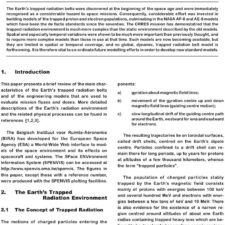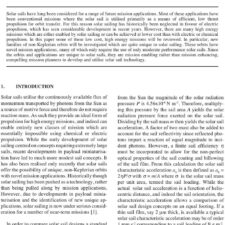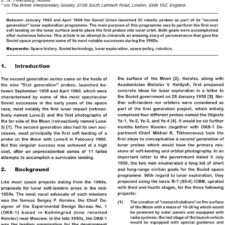Trojan Tour Mission Concepts Provide Several Options for Cost-Effective Break-Through Science
£5.00
K. Hibbard et al. (2010), JBIS, 63, pp.351-356
Refcode: 2010.63.351
Keywords: ASRG, radioisotope power, REP
Abstract:
As one of several dozen studies commissioned by the National Research Council (NRC)’s Planetary Decadal Survey to explore the technical readiness, feasibility and affordability of scientifically promising mission scenarios, JHU/APL (APL) helped to develop several Trojan Tour Mission concepts. The purpose of this study was to define a preferred approach along with the risk/cost trade space for a Trojan Tour Mission launched in the 2019-2023 timeframe and targeted to be within a $1B cost cap in FY15 dollars. Trojan asteroids are unexplored science targets that share Jupiter’s orbit, yet may originate from the Kuiper Belt. Principal mission science objectives included characterizing the bulk chemical composition of a Trojan asteroid surface, observing the current geologic state of the surface and infer past evolution and the relative importance of surface processes, characterizing the bulk physical properties and interior structure of a Trojan asteroid, and searching for or constraining outgassing from subsurface volatiles. Two nuclear powered mission concepts were developed to assess the feasibility of a mission with one or more flybys of Trojan asteroids before an extended rendezvous with a different Trojan asteroid. The concepts included one with chemical propulsion and two ASRGs for power, while the other was a Radioisotope Electric Propulsion (REP) design with six ASRGs for power and electric propulsion. The ballistic trajectory option allowed the full payload to be carried on an Atlas V 411 for the ASRG concept, with a cruise time of 10 years. The REP trajectory option allowed the full payload to be carried on an Atlas V 431 with a cruise time of 8 years. Both concepts achieved the science objectives at a primary target asteroid with one or more flybys prior to the rendezvous. While specific flyby targets were not defined, both the ballistic and electric propulsion trajectory designs allowed for sufficient time in the “Trojan cloud” prior to the primary rendezvous to be statistically confident one or more flybys are achievable. Both the chemical ASRG concept and REP concept enabled potential secondary science objectives such as landing. The REP concept could possibly support advancing to a second asteroid rendezvous; an identified second target was achievable with typical resource margins (>30%), but not within the study mandated margins (≥43%). The chemical ASRG concept was selected by the panel as the point design to present in detail and cost, since it met all of the study objectives while minimizing risk and technical complexity. There is no guarantee that this mission or any of the other missions studied will appear in the decadal survey’s final list of priorities. The study was conducted by a team led by Mike Brown with members of the Primitive Bodies Panel working with the APL Space Department as the design centre. NASA Glenn Research Centre’s COMPASS team made significant contributions as part of the design team in the areas of Mission Design, REP concept development, and ASRG performance.





